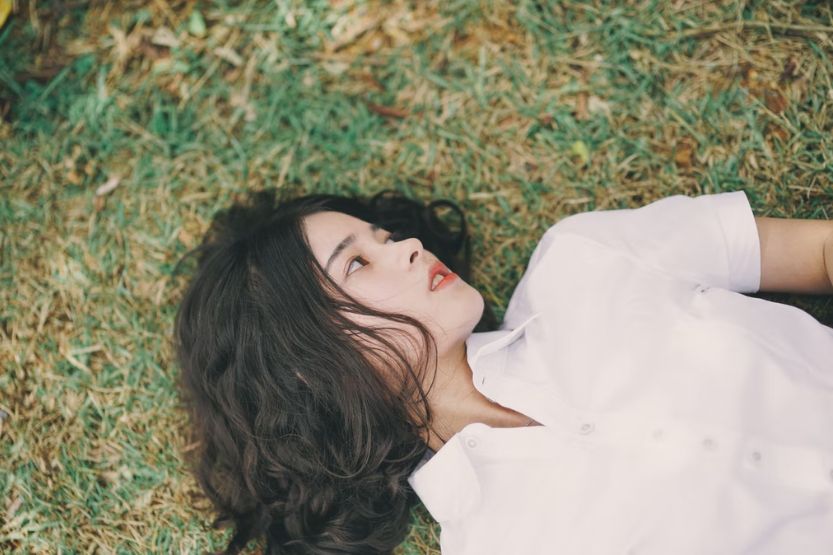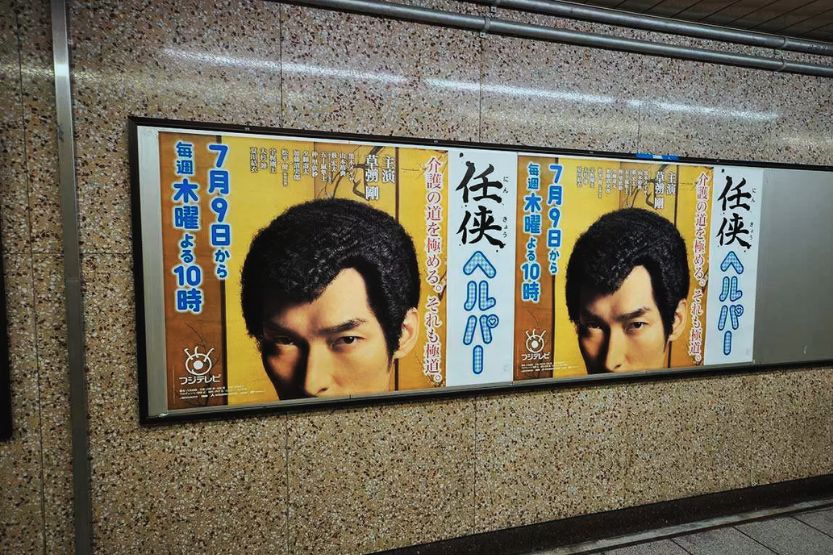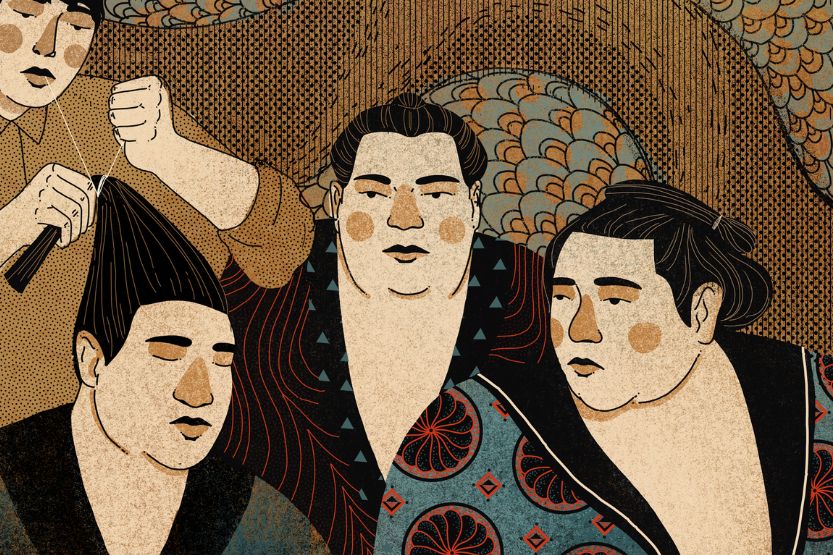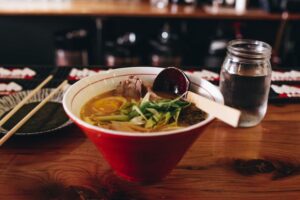It’s rare to see Japanese sporting curly or kinky bob-like hair. However, wavy and curly hairstyles are becoming more popular in Japan, as evident in actress and model Rola.
Most Japanese curly hair is classified as Type 2 with subtypes 2A, 2B, and 2C on the curl pattern scale. This means that it’s fine and thin but with a moderate amount of natural wave or curl. It can be prone to frizz and may have difficulty holding styles without products designed explicitly for wavy or curly hair.
Read on to learn more about Japanese curly hair, the different styles that can work on it, some basic care tips, and a few interesting facts about Japanese and their hair.
Japanese Naturally Curly Hair

Natural Soft Curls
Japanese curly hair is a type of hair that is naturally curly, and it is usually soft to the touch. Although it may be similar to other curly hair types, Japanese curly hair has unique characteristics, setting it apart from different curly hair types.
Shinier Than Other Types of Curly Hair
Japanese curly hair is a type of curly hair that is naturally fine, thin, and soft. The texture of Japanese curly hair is similar to Caucasian curly hair, but it’s usually less frizzy and more defined. Also, it looks shinier than other types of curly hair, like Mexican curly hair.
Can Be Straight or Wavy
Japanese hair can be straight or wavy, but it’s typically the former. The curls are usually uniform around the entire head and have slight variations in size or shape. This makes it easier to manage than some other types of curls.
Improper Styling Can Damage Japanese Curls
The texture of Japanese curly hair needs products designed specifically for delicate curls to look their best. Any styling techniques that make curls look frizzy or rough must also be avoided. Improper styling can pull the hair straight down with the fingers, breaking them off entirely.
Belongs to the Type 2 Curl Pattern
Most Japanese curly hair is of Type 2 with its subtypes 2A, 2B, and 2C on the curl pattern scale.
Hair of this type is more delicate and tends to be silky, with a subtle wave that ranges from slightly wavy (Type 2A) to tight ringlets or corkscrews (2C). It’s generally prone to frizzing without good hydration:
| Hair Type and Subtypes | What It Looks Like |
| Type 2 Hair | Generally straight at the root but becomes wavy as it grows longer. The best way to describe type 2 hair is “S” shaped. |
| Type 2A Hair | Relatively loose curls with a slight “S” pattern. The most common type of curly hair. |
| Type 2B Hair | Slightly tighter than 2A and have a more defined “S” shape. The vast majority of people with wavy hair fall into this subtype. |
| Type 2C Hair | Tightest and most corkscrew-like of all the subtypes. It can be tough to manage. |
Curly Hairstyles for Japanese Females
Japanese curly hair is beautiful. It can be straightened or curled and looks great in any style! But what are the best styles for Japanese females with curly hair? How do you take care of it?
Here are great curly hairstyles for Japanese ladies:
1. The S-Curve
This is a perfect hairstyle for Japanese females with thick, wavy hair. It’s simple to do and looks great on medium-length or longer hair.
To do this style:
- Begin by parting the hair down the middle and using a curling iron to create big waves all over the head (the bigger, the better).
- Next, brush out the waves until they’re even and smooth.
- Get rid of any frizziness at the ends by using a flat iron.
2. Brushed-Back Curls
Curly Japanese hair is perfect for showing off with a brushed-back style. Although the hairstyle is elegant, the curls give a playful and fun feel to one’s overall look.
Here’s how to create this hairstyle:
- Comb all of the hair backward, starting from the roots.
- Secure it into a ponytail on the back of the head at neck level.
- Use hairspray for extra hold.
3. The Top Knot
This style is probably one of the most popular among busy ladies because it’s quick and easy. Just throw the hair into a high ponytail, twist it, and secure it with bobby pins. That’s it!
Leave some pieces out in front for a more messy look, or keep everything tight and neat if going for something more polished.
4. Half-Bun with Braids
This hairdo is something more approachable yet straightforward and fun to make. It’s ideal for Japanese ladies with square- and round-shaped faces.
Here’s how to style it:
- Leave out the bangs and make a braid on each side of the head.
- Put the braids’ ends into a Japanese-style half-bun on the back of the head.
- Gently curl the bangs for some extra texture.
5. The Braided Bun
This is such an easy and cute hairstyle for Japanese females. Just separate hair into two sections, braid each, wrap them around, secure with bobby pins, and go!
6. Braided Space Bun
The braided space bun is great for Japanese ladies with square- and oval-shaped faces. It’s the ultimate braided bun hairstyle for daring and bold Japanese ladies ready to take on the culture.
To do this style:
- Tie hair on each side into medium-high ponytails.
- Divide one ponytail into three parts.
- Braid two parts and make one bun out of one part.
- Wrap one braid around the bun and then hold it in place with a bobby pin.
- Repeat this process on the other side.
Can You Get Your Hair Braided in Thailand?
7. Big Textured Waves
This hairstyle is ideal for Japanese women with round faces and heart-shaped ones. It has a very romantic vibe, perfect for special occasions or nights.
Here’s how to style it:
- Separate hair into two sections, parting from ear to ear.
- Take the top section and put it in a ponytail at the back of the head.
- Curl the bottom section using a big barrel curling iron.
- Start from the middle of the hair and work down until the end.
Again, can the Japanese have curly hair? In reality, some Japanese have wavy or curly hair instead of the straight hair you usually see on TV.
How Much Would a Perm Cost for Long Hair?
Japanese Male with Curly Hair

Punch Perm
In Japan, the panchi-pāma or punch perm is a tightly permed hairstyle for males. The punch perm was popular between the 1970s to 1990s among the yakuza and other working-class men, including:
- Truck drivers
- Enka singers
- Construction workers
- Chinpira (lower class criminals or gangsters)
- Bōsōzoku (Japanese motorcycle gang members)
However, the punch perm became less popular in the late 1990s due to negative associations with organized crime and changes in fashion trends.
The punch perm resembles the Jheri curl, which was popular in the United States during roughly the same time frame. Their only difference is that punch perm curls are much tighter than those seen on Jheri curled hair.
Punch Perm History
Shigemi Naganuma invented the hairstyle in the 1960s by copying the look of Afro-textured hair. At that time, available hair irons were round and couldn’t hold the hair tightly. So Naganuma modified a hair iron by filing it into a hexagonal shape, similar to a pencil, to achieve a tighter hold.
Originally, Naganuma named this hairstyle “champion press.” Later, it came to be called “punch perm” due to its powerful and punchy appearance.
Few barbers are trained to make this curly Japanese hairstyle due to the lesser demand for punch perm in recent years. Also, over the years, Japanese men preferred to have their hair cut at salons instead of barbershops.
What Do Japanese Think of Curly Hair?
The Japanese are not used to seeing curly hair. For them, straight black hair is the standard of beauty. So they might think curly hair is “weird” or “different.” But “different” doesn’t always mean “unacceptable” except in schools or a traditional or conservative environment.
In general, most schools in Japan are pretty strict when it comes to hairstyles and hair colors. Most Japanese public schools only allow straight black hair. No bleaching, dying, or perming allowed. Students aren’t allowed to have dyed hair or any hairstyle considered “out-of-the-norm.”
In other words, any student with natural light, wavy, or curly hair must straighten their hair or dye it black. This strict rule is followed in some metropolitan high schools in Tokyo unless students present proof of their natural hair color (non-black) or pattern (curly).
However, schools in Tokyo have recently scrapped controversial regulations on students’ hair and undergarments. So, if you have curly hair and planning to study in Tokyo, Japan, don’t worry too much about it.
Hair Care Tips for Japanese Curly Hair
1. Use a Wide-tooth Comb for Wet Hair
A regular comb will get caught in the curls and break them off, but a wide-tooth comb will glide through without causing any damage.
2. Don’t Brush or Comb Your Hair While It’s Dry
This will only lead to frizz and breakage. Instead, finger-comb hair to detangle it.
3. Invest in a Good Curly Hair Product Routine
This includes sulfate-free shampoo and conditioner, leave-in conditioners, and curl-defining products.
4. Be Patient When Drying Hair
Air drying is best for avoiding heat damage, but if a blow dryer must be used, use the lowest setting possible and keep the dryer moving so that it doesn’t stay in one spot for too long.
Also, use a diffuser on the blow dryer if necessary. This will spread the heat out so that it doesn’t just sit in one place on the hair.
5. Don’t Wash Hair Too Often
Hair that isn’t washed often will have natural oils that help keep it moisturized, reducing frizz and enhancing the curls.
6. Use a Volumizing Shampoo and Conditioner for Thin Curly Hair
For Japanese hair with fine or thin curls, volumizing shampoo and conditioner-containing ingredients like wheat proteins can help thicken the strands and create more volume overall. This is especially good for Japanese ladies trying to grow a curly bob cut.
Role of Hair in Japanese Culture and Society

For both males and females in Japan, hair is a significant part of their overall look. In history, it’s been used to determine social status and rank.
Hair as a Crowning Glory and a Means of Wealth
For Japanese women, hair is their crowning glory and a means of their wealth. The Japanese have signature women’s hairstyles only worn by:
- Nobility
- Royalty
- Marriage
- Special events or occasions
Short-haired Men Are Regarded as Shameful or Weak
In the past, Japanese men wore long hair and tied it into a simple ponytail or bun. This was the classic look, and Japanese men who opted to have their hair cut short were regarded as shameful or weak. And this is true not just in Japan but throughout many parts of the world.
It was not until Japan became influenced by the west that it began to embrace shorter hairstyles, particularly those worn by men.
Whereas long and sleek locks had been the norm for both genders, a clean-shaven look for Japanese men became more preferred. This style was often accompanied by formal clothes such as suits, coats, and hats.
Frequently Asked Questions – Japanese with Curly Hair
Is Curly Hair Common in Japan?
Most Japanese have naturally straight hair or just a slight curl. So you will probably get a lot of attention with curly hair, but it’s not bad. Curly hair is not typical in Japan, so people may notice when you walk down the street with curly hair.
Are There People with Curly Hair in Japan?
Yes, there are. However, looking different can be challenging in Japan, where some schools impose strict rules on students’ appearances. That’s one reason Japanese straight perms were invented for the domestic market.
How Do Japanese Maintain Their Hair?
The Japanese maintain their hair using various methods, including shampooing, conditioning, and brushing. They may also use hair products, such as hair oils and serums, to keep their hair healthy and looking its best.
Do Japanese with Curly Hair Have Non-Asian Genes?
Some people have curly hair in Japan, and contrary to popular belief, not all of them have non-Asian genes.
Conclusion – Japanese Naturally Curly Hair
Japanese curly hair is a beautiful and unique thing. Although it can be challenging to deal with at times, it can be styled into different looks and easily managed with the proper care and hair products.
I hope you found this article on Japanese curly hair helpful and informative. Learning about certain aspects of Japanese culture is a great way to improve your understanding of the world around you.





![Read more about the article What Is Haircut Trimming? [Trim vs Cut]](https://howchimp.com/wp-content/uploads/2022/05/what-is-haircut-trimming-300x200.jpg)
![Read more about the article Red and Blue Hair [How to Dye Red Hair Blue, Blue Hair Red, and Both]](https://howchimp.com/wp-content/uploads/2022/05/red-and-blue-hair-300x200.jpg)